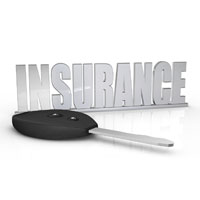
Buying the lowest price Springfield auto insurance on the web can be intimidating for vehicle owners who are new to buying their auto insurance over the internet. With more and more insurers to choose from, how are vehicle owners expected to have the ability to compare every auto insurance company to find the best available rates?
You should make it a habit to compare prices once or twice a year because prices trend upward over time. Even if you think you had the lowest rates last year you can probably find a lower rate today. There are lots of tips to save on auto insurance online but we’re going to give you some excellent ideas to reduce your auto insurance bill.
To find the best auto insurance quotes, there are several ways of comparing rate quotes from many auto insurance companies in Nebraska. The easiest way to find competitive insurance rates is to jump online and get quotes. This is very easy and can be done by using one of the methods below.
- Probably the best way to find the lowest comparison rates is a comparison rater form (click to open form in new window). This easy form saves time by eliminating repetitive form entry for every company. A single, simple form gets rate comparisons from many national carriers. Just one form and you’re done.
- A more time consuming way to analyze rates is to manually visit the website of each company and fill out their own quote form. For examples sake, let’s assume you want to get rates from Farmers, Esurance and Travelers. To find out each rate you need to spend time on each company’s site and type in your information over and over, which can get old fast.
For a handy list of car insurance company links in Springfield, click here.
Whichever way you choose to compare rates, ensure you’re using apples-to-apples deductibles and coverage limits with each company. If you have different coverage information it will be nearly impossible to determine the best price in Springfield. Even a minor difference in insurance coverages could skew the results. And when comparison shopping, comparing more company’s prices gives you a better chance of getting the best offered rates. Not every company does online price quotes, so it’s important to compare price estimates from them as well.
More affordable rates by taking advantage of these six discounts
Companies offering auto insurance don’t list every policy discount very clearly, so the list below details a few of the more common as well as the least known credits that you can use to lower your rates.
- ABS and Traction Control Discounts – Anti-lock brake equipped vehicles prevent accidents and qualify for as much as a 10% discount.
- Bundle and Save – If you can bundle your auto and homeowners insurance with the same company you may save up to 20% and get you .
- Good Students Pay Less – Performing well in school may save you up to 25%. You can use this discount normally up until you turn 25.
- No Charge for an Accident – Not a discount per se, but certain companies will forgive one accident without getting socked with a rate hike if you are claim-free for a certain period of time.
- More Vehicles More Savings – Buying insurance for several vehicles on one policy can get a discount on all vehicles.
- Drive Less and Save – Maintaining low annual mileage could qualify for lower premium rates on the low mileage vehicles.
A quick disclaimer, most discount credits are not given to the entire cost. The majority will only reduce the cost of specific coverages such as liability, collision or medical payments. Even though it may seem like it’s possible to get free car insurance, you’re out of luck.
Some companies who might offer many of the previously listed discounts may include but are not limited to:
Before you buy a policy, ask all companies you are considering which discounts can lower your rates. Savings might not be offered in every state. To locate auto insurance companies with significant discounts in Springfield, click here to view.
How much auto insurance do I need?
When choosing the best auto insurance coverage, there really is not a “best” method to buy coverage. Your needs are not the same as everyone else’s.
Here are some questions about coverages that might help in determining whether you would benefit from an agent’s advice.
- Do I need roadside assistance coverage?
- What is the difference between comprehensive and collision coverage?
- Should I file a claim if it’s only slightly more than my deductible?
- How much underlying liability do I need for an umbrella policy?
- I don’t drive much so do I pay less?
- Do I need to file an SR-22 for a DUI in Nebraska?
- Is Nebraska a no-fault state?
- Am I covered by my employer’s commercial auto policy when driving my personal car for business?
- What should my uninsured motorist coverage limits be in Nebraska?
- Does having multiple vehicles earn me a discount?
If you can’t answer these questions but you know they apply to you, you might consider talking to an insurance agent. To find an agent in your area, complete this form.
Auto insurance coverages 101
Knowing the specifics of your auto insurance policy aids in choosing which coverages you need and proper limits and deductibles. The coverage terms in a policy can be confusing and coverage can change by endorsement.
Comprehensive coverage (or Other than Collision)
Comprehensive insurance covers damage OTHER than collision with another vehicle or object. You first have to pay a deductible and the remainder of the damage will be paid by comprehensive coverage.
Comprehensive insurance covers things like vandalism, a broken windshield, damage from a tornado or hurricane, hitting a deer and hitting a bird. The most your auto insurance company will pay is the cash value of the vehicle, so if it’s not worth much more than your deductible it’s not worth carrying full coverage.
Uninsured Motorist or Underinsured Motorist insurance
This provides protection when the “other guys” either have no liability insurance or not enough. It can pay for injuries to you and your family and also any damage incurred to your vehicle.
Since a lot of drivers have only the minimum liability required by law (which is 25/50/25), their liability coverage can quickly be exhausted. That’s why carrying high Uninsured/Underinsured Motorist coverage is very important.
Insurance for medical payments
Personal Injury Protection (PIP) and medical payments coverage provide coverage for expenses for things like doctor visits, rehabilitation expenses, prosthetic devices, surgery and dental work. The coverages can be used to cover expenses not covered by your health insurance policy or if you do not have health coverage. Coverage applies to all vehicle occupants as well as being hit by a car walking across the street. PIP is not available in all states and may carry a deductible
Collision coverage protection
Collision coverage pays for damage to your vehicle caused by collision with an object or car. You will need to pay your deductible then your collision coverage will kick in.
Collision coverage protects against claims such as sustaining damage from a pot hole, backing into a parked car, colliding with a tree, hitting a mailbox and hitting a parking meter. Paying for collision coverage can be pricey, so consider dropping it from older vehicles. Another option is to bump up the deductible to save money on collision insurance.
Liability auto insurance
This coverage protects you from damage or injury you incur to a person or their property in an accident. It consists of three limits, bodily injury for each person, bodily injury for the entire accident, and a limit for property damage. As an example, you may have liability limits of 100/300/100 that means you have $100,000 bodily injury coverage, a per accident bodily injury limit of $300,000, and a total limit of $100,000 for damage to vehicles and property.
Liability insurance covers claims like legal defense fees, repair bills for other people’s vehicles, medical services, court costs and funeral expenses. How much liability coverage do you need? That is a personal decision, but you should buy higher limits if possible. Nebraska state law requires minimum liability limits of 25,000/50,000/25,000 but drivers should carry more liability than the minimum.
Even more information is located at the Nebraska Department of Insurance website. Nebraska consumers can discover disciplinary actions, read consumer alerts, read enforcement actions against agents and companies, and find disaster information.
The following information may also be useful.

